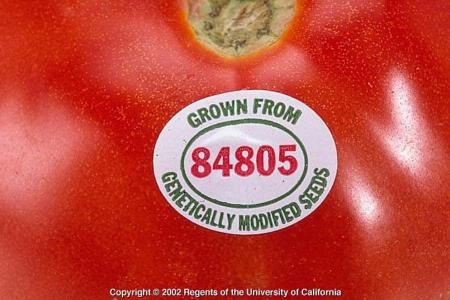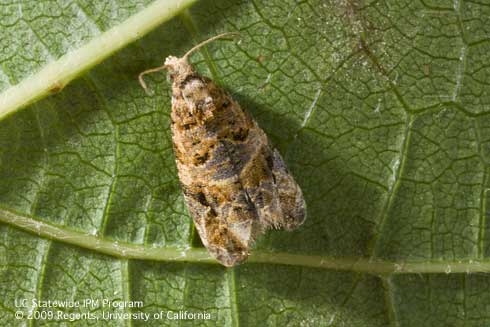From the UC Blogosphere...
Unfounded fear of GMOs keeps good food out of the marketplace
Food created through genetic engineering and conventional breeding are safe and they deserve equal treatment in the marketplace, a UC Berkeley biotechnology expert told reporter Lisa Krieger of the San Jose Mercury News.
Peggy G. Lemaux, UC Cooperative Extension specialist in the Department Plant and Microbial Biology at UC Berkeley, says fear of the unknown can stop genetic engineering from helping consumers. She genetically engineered wheat to produce grain that is less allergenic and might be better tolerated by people with wheat allergies. Because of anti-genetic-engineering sentiment, she said, companies that could take it to market did not embrace it.
"No one is interested in moving it to the marketplace," Lemaux said.
The Mercury News article was centered on Proposition 37, an initiative on California's November ballot that, if passed, will require labeling on genetically engineered food.
So Bee It
Honey bees on blanket flowers (Gaillardia). Honey bees on Mexican sunflowers (Tithonia). The Girls of Autumn....not unlike...
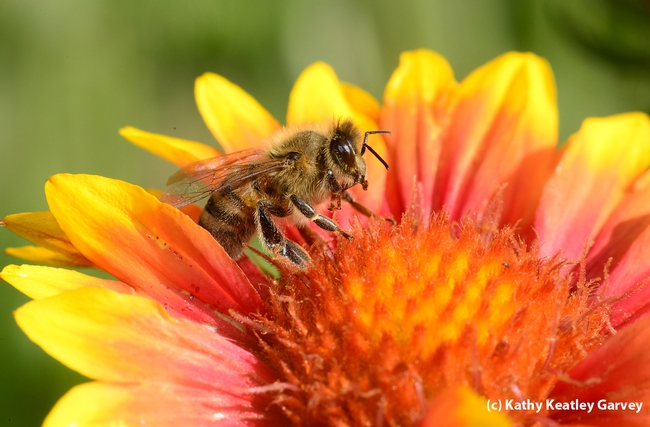
Honey bee on a blanket flower, Gaillardia. (Photo by Kathy Keatley Garvey)
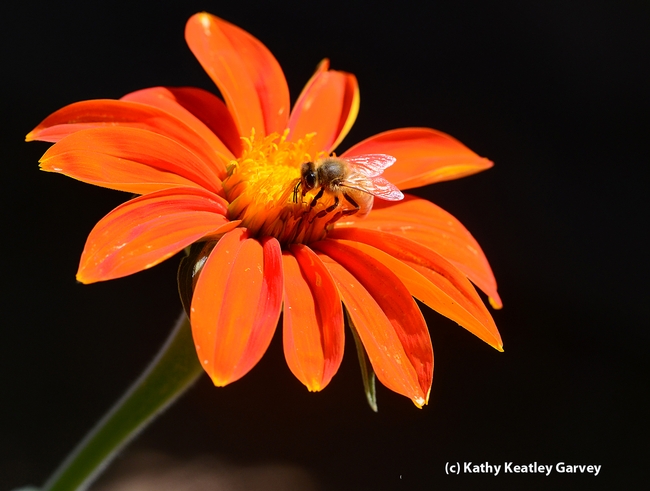
Honey bee on a Mexican sunflower (Tithonia). (Photo by Kathy Keatley Garvey)
The Mighty Monarch
We're accustomed to seeing a solitary monarch butterfly (Danaus plexippus) flitting around a garden. But millions of...

Monarch butterfly nectaring a Mexican sunflower (Tithonia). (Photo by Kathy Keatley Garvey)
Sonoma County grape growers face a triple threat
“Invasive pests are a problem,” said Nick Frey, president of the Sonoma County Winegrape Commission. “They threaten California agriculture in general, and probably our ecology too, so it’s important to try to prevent their import into the state, and if they do get here, to detect them early. If you don’t get early detection, your odds of eradication are low.”
Rhonda Smith, UC Cooperative Extension advisor in Sonoma County, said local citizens also need to understand and comply with rules to prevent the introduction and spread of invasive species.
“The bottom line is, follow the rules,” Smith said, “because ultimately, the result is pretty dramatic. And who pays the price for that? We pay the price for the enormous effort to eradicate something once it’s here, and/or, we completely lose that industry. We then begin to eat more fruits and vegetables we don’t grow here in California.”
'Two-way learning' embraced
Tim Hearden, Capital Press
Rick Buchner, UC Cooperative Extension advisor in Tehama County, was featured as a "Western Innovator" in a Capital Press story published yesterday. In the article, he explained how the UCCE two-way learning model - involving UC academics and farmers - has been successful in solving agricultural problems.
"The beauty of extension is that we all learn together," Buchner said. "The growers know things that I don't, and I hopefully can share things from the university that they don't know. When we work together, it's a pretty powerful team."
Superorganisms, Mimicry and Aphids
Superorganisms, mimicry and aphids... Those are some of the topics to be covered at the UC Davis Department of Entomology's...
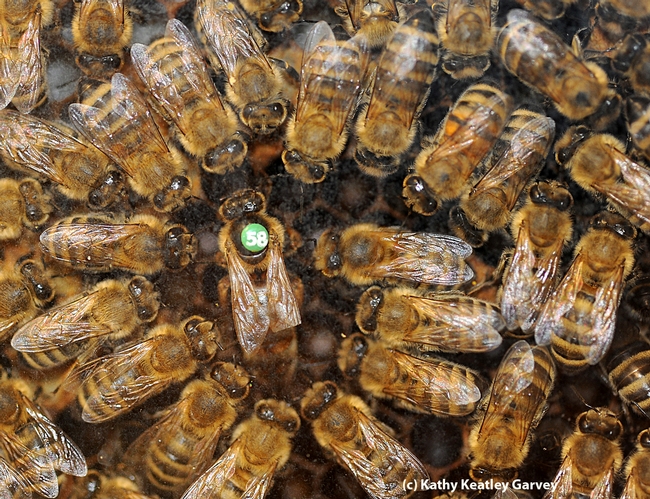
Honey bees are considered a superorganism. Here worker bees form a retinue around the queen. (Photo by Kathy Keatley Garvey)



